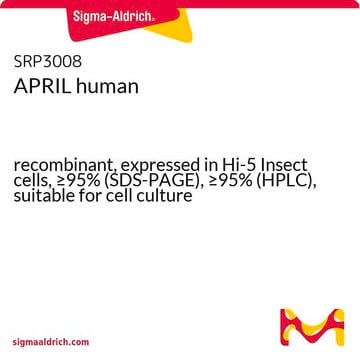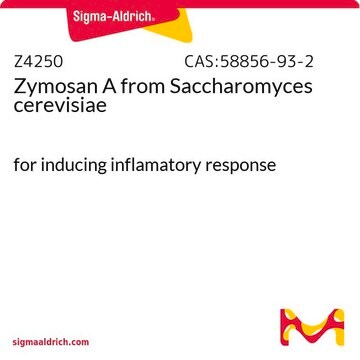E9902
Ephrin-A1/Fc Chimera from mouse
>90% (SDS-PAGE), recombinant, expressed in NSO cells, lyophilized powder
Sinónimos:
B61, EFL-1, LERK-1
About This Item
Productos recomendados
biological source
mouse
Quality Level
recombinant
expressed in NSO cells
assay
>90% (SDS-PAGE)
form
lyophilized powder
potency
0.16-10 ng/mL
mol wt
monomer calculated mol wt 46.8 kDa
50-55 kDa by SDS-PAGE (reducing)
packaging
pkg of 200 μg
storage condition
avoid repeated freeze/thaw cycles
impurities
endotoxin, tested
UniProt accession no.
storage temp.
−20°C
Gene Information
mouse ... Efna1(13636)
Biochem/physiol Actions
Other Notes
Physical form
Analysis Note
Storage Class
11 - Combustible Solids
wgk_germany
WGK 3
flash_point_f
Not applicable
flash_point_c
Not applicable
Certificados de análisis (COA)
Busque Certificados de análisis (COA) introduciendo el número de lote del producto. Los números de lote se encuentran en la etiqueta del producto después de las palabras «Lot» o «Batch»
¿Ya tiene este producto?
Encuentre la documentación para los productos que ha comprado recientemente en la Biblioteca de documentos.
Nuestro equipo de científicos tiene experiencia en todas las áreas de investigación: Ciencias de la vida, Ciencia de los materiales, Síntesis química, Cromatografía, Analítica y muchas otras.
Póngase en contacto con el Servicio técnico








